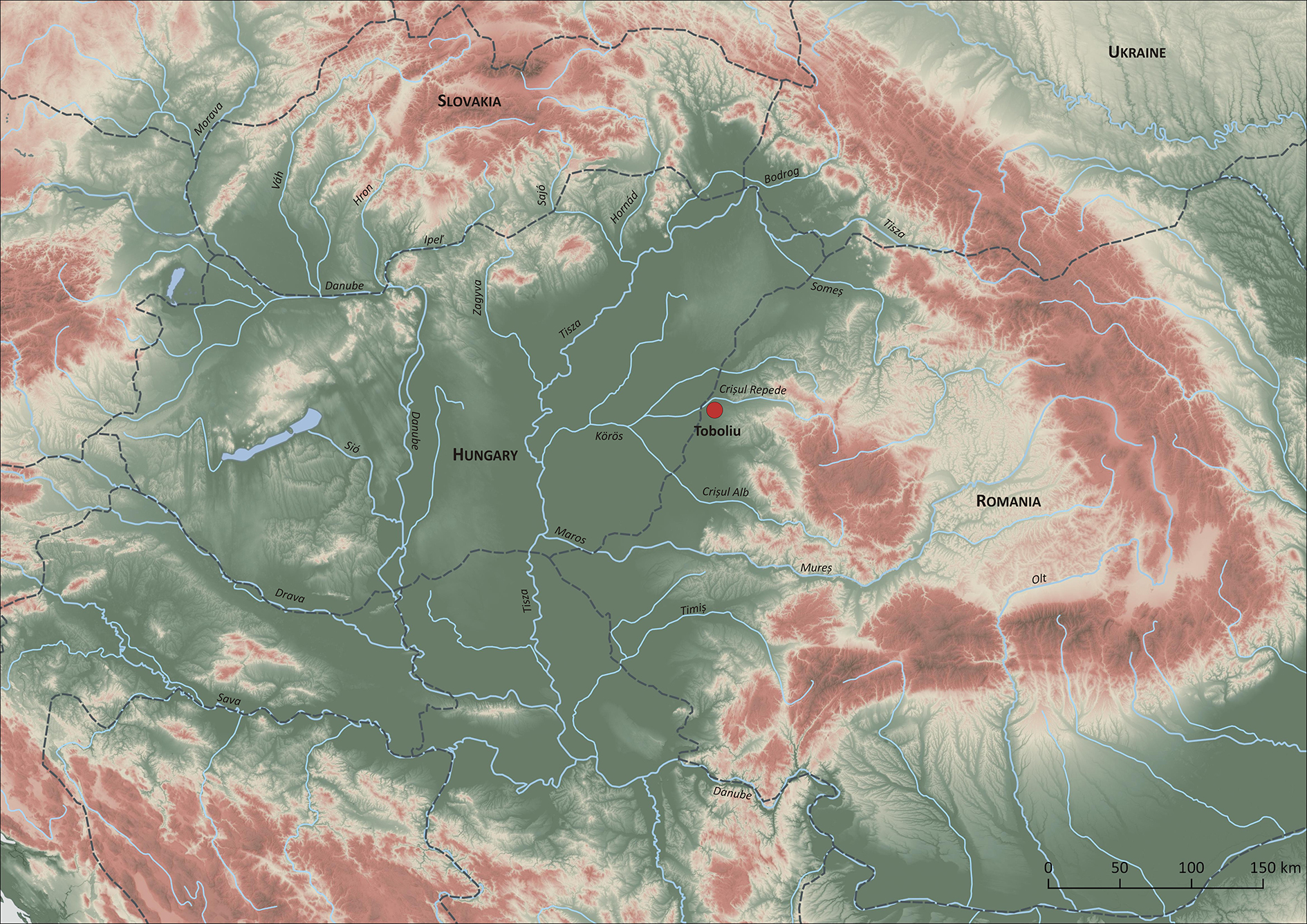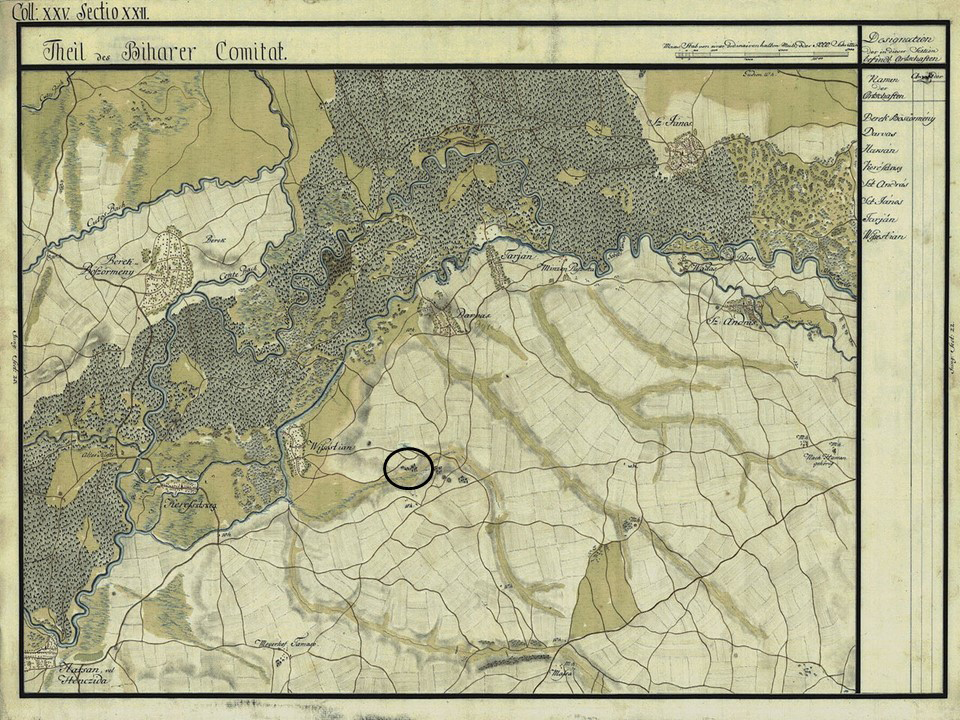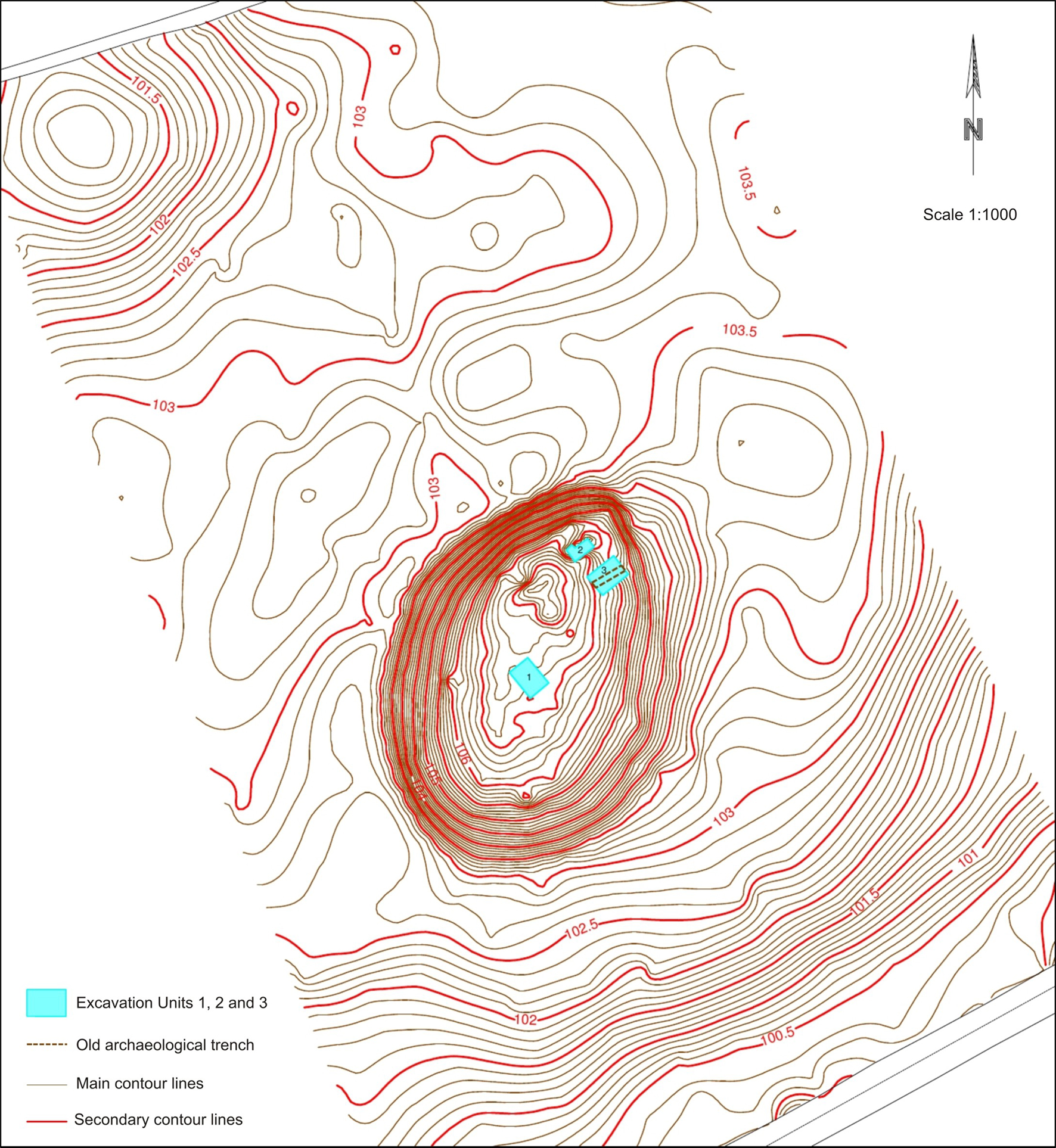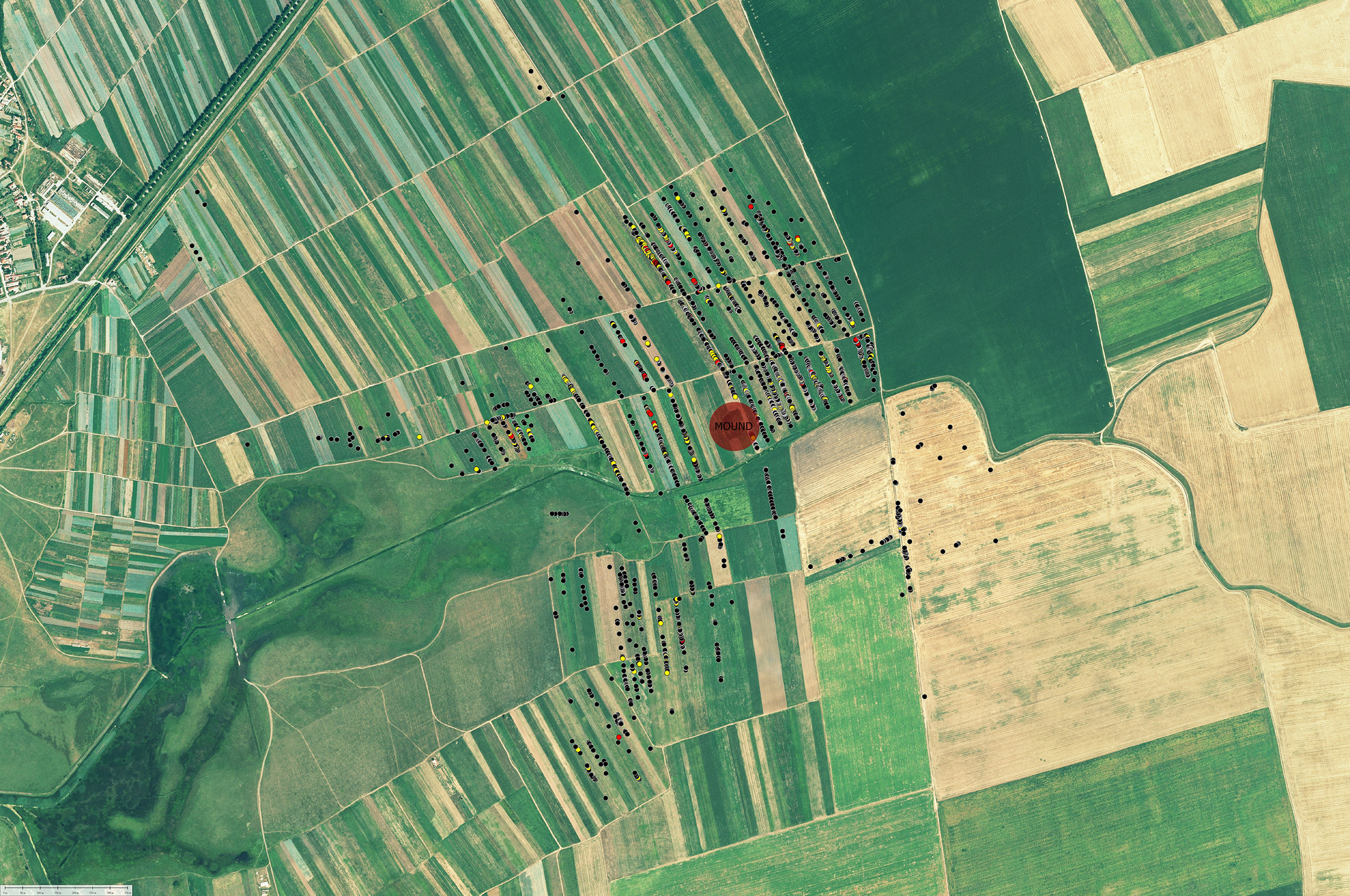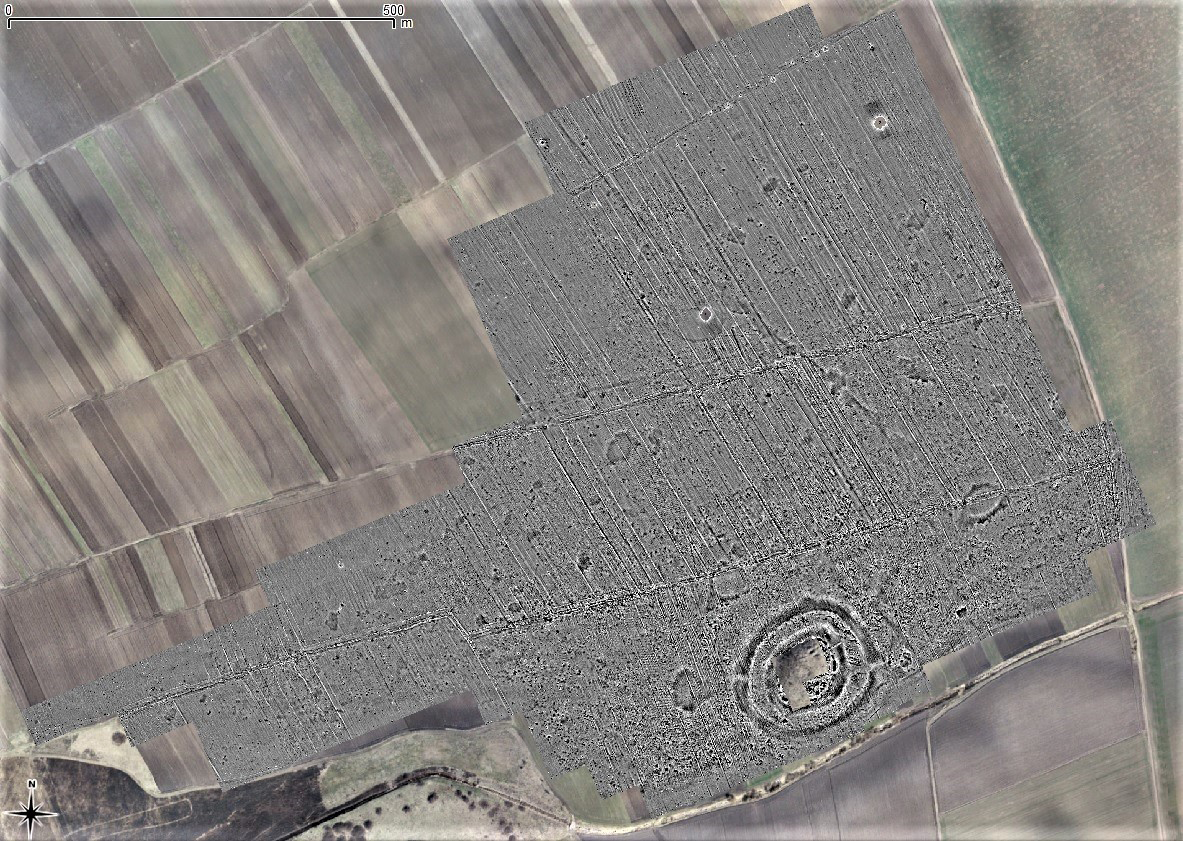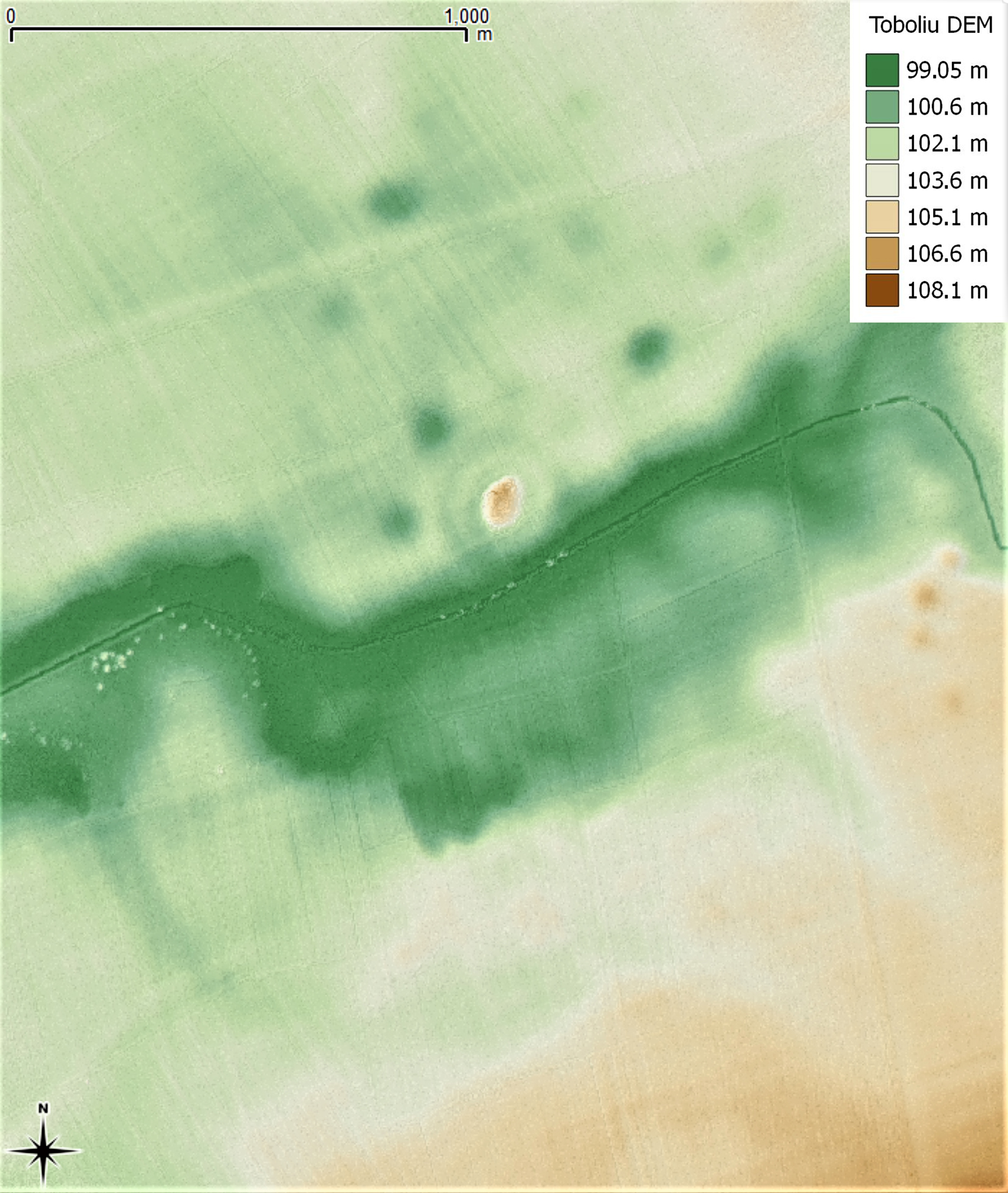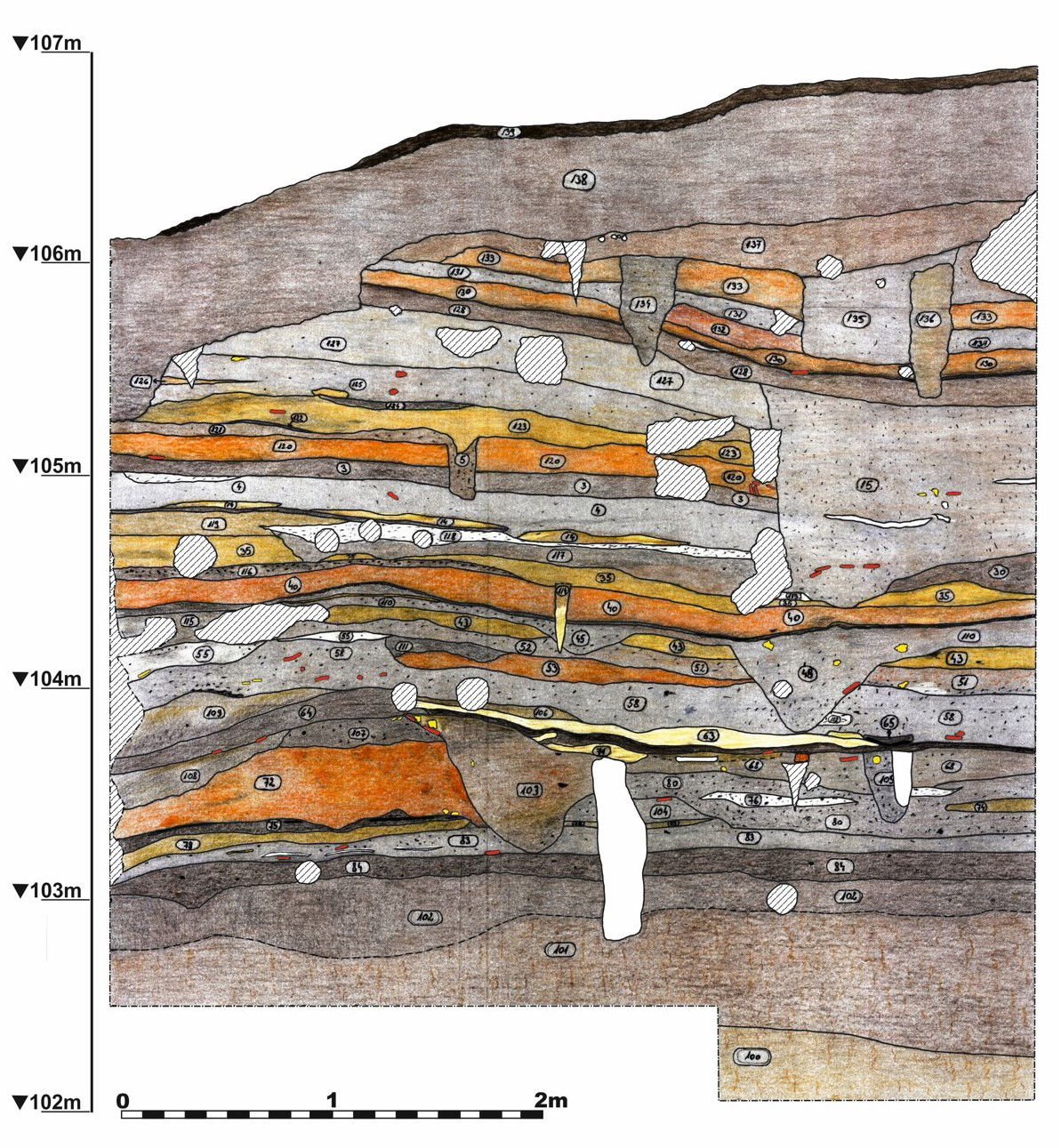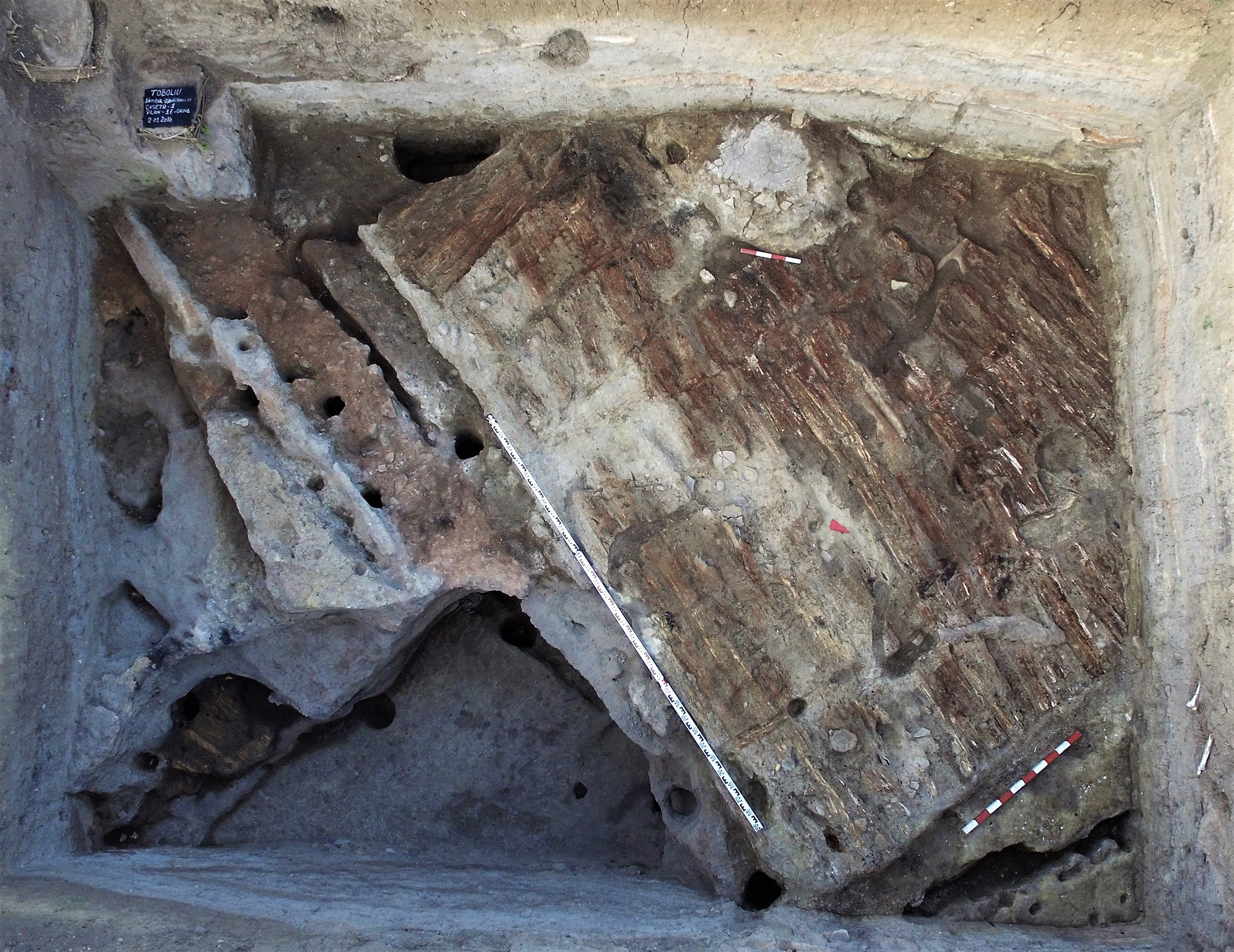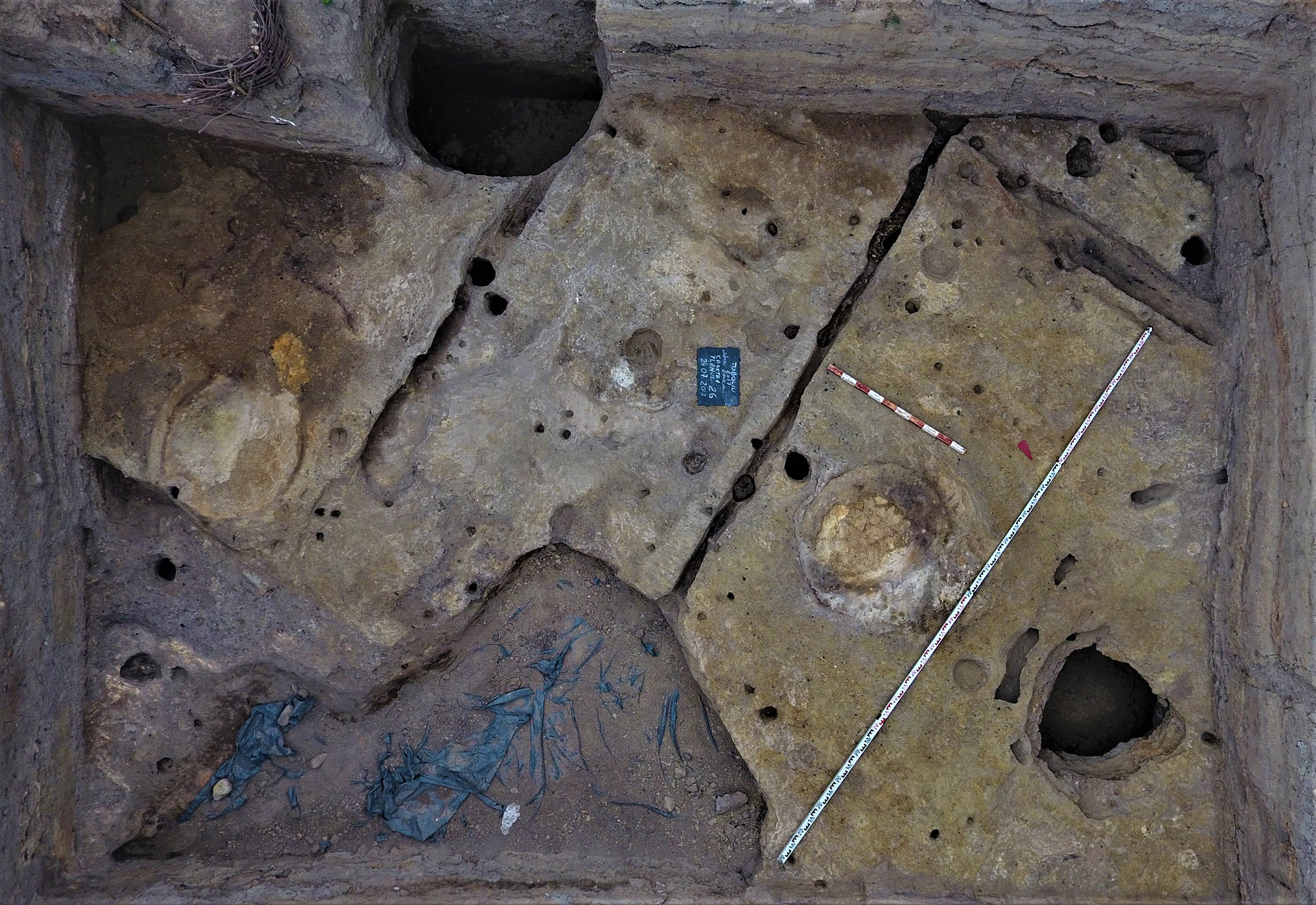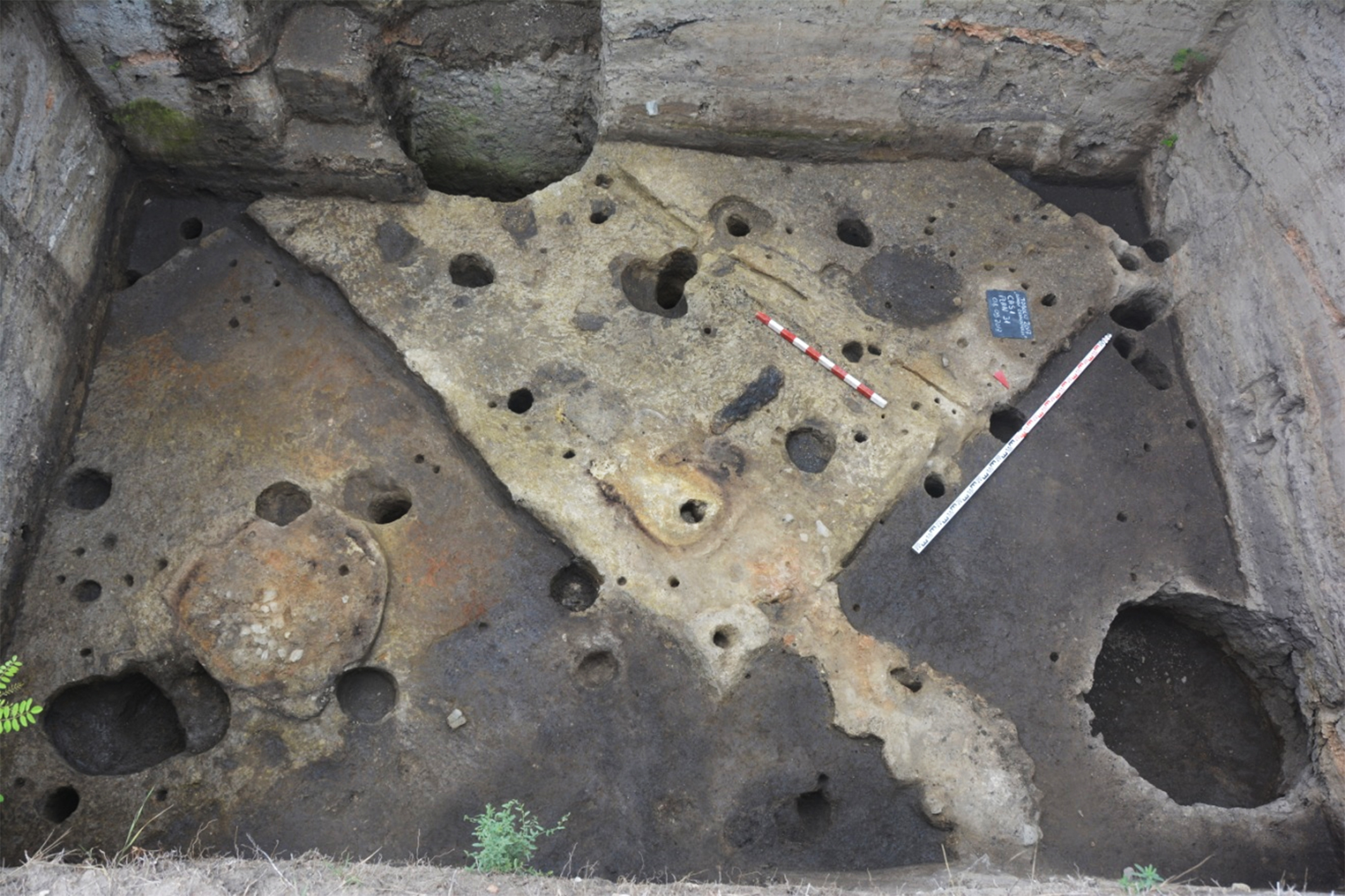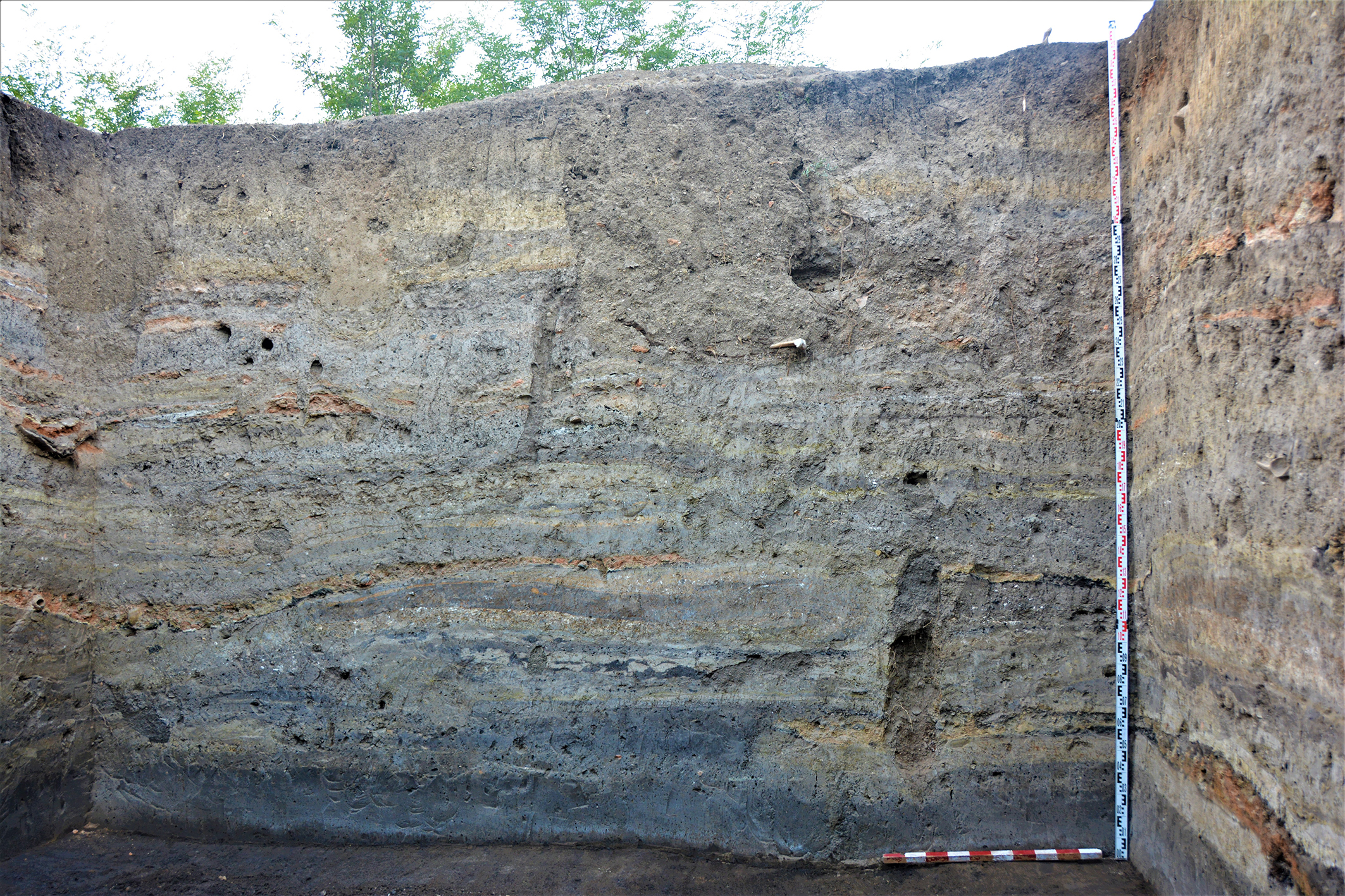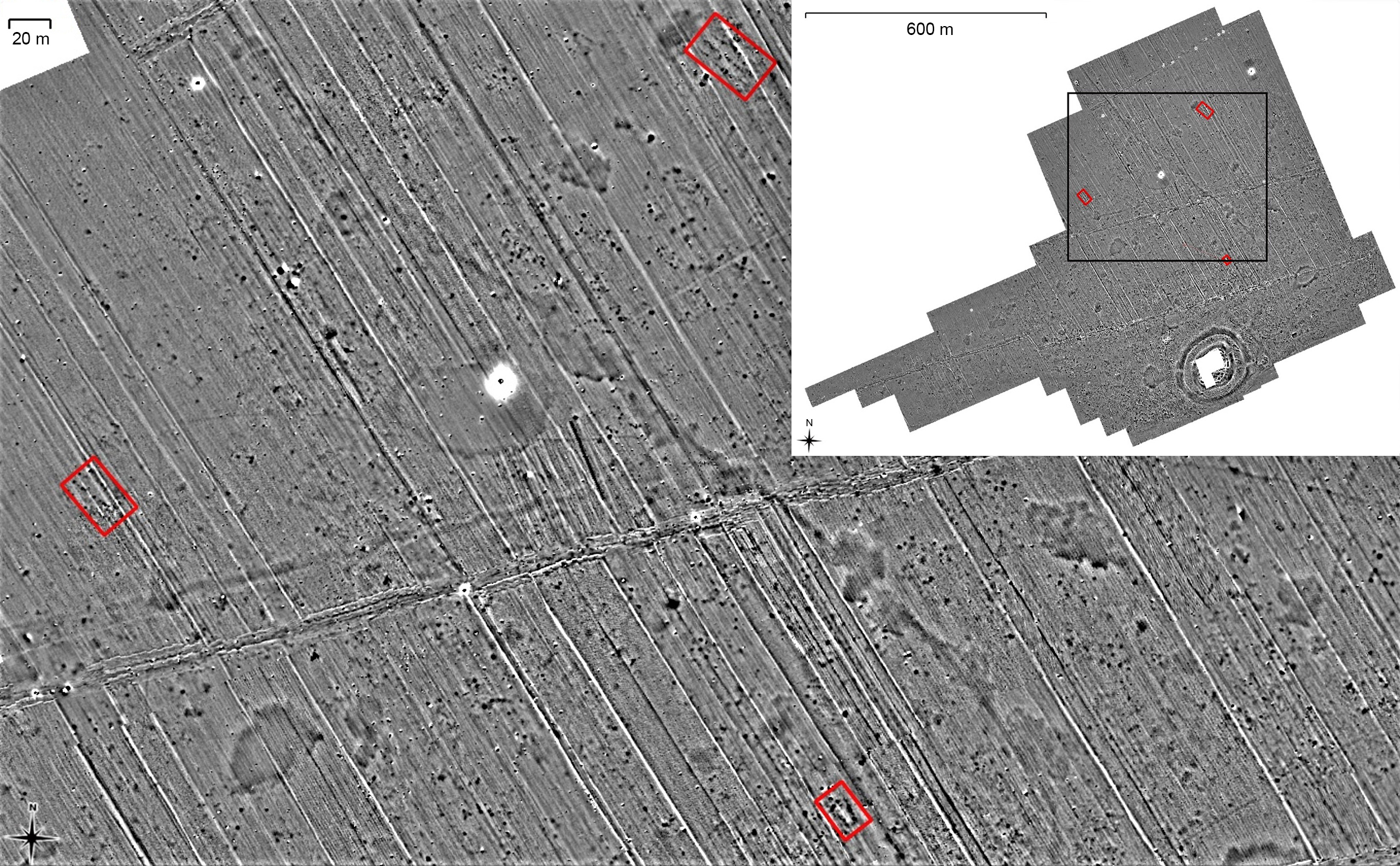Living together or apart?
Unravelling the development, internal organization and social structure of a complex Bronze Age tell settlement at Toboliu, western Romania
Introduction
The Bronze Age site at Toboliu offers a unique opportunity to uncover in detail how a Bronze Age settlement mound together with its surrounding open settlement developed and functioned as an integrated system. Through our multidisciplinary approach we aim to reveal the interplay of factors that contributed to the genesis, growth and subsequent decline of this type of complex site. To this end, both archaeological investigations and comprehensive scientific analyses will be employed. Our project features two closely integrated parts, which in cooperation will provide a broad spectrum of new information about a Bronze Age tell in terms of the chronological and spatial development of the entire site structure, as well as subsistence practices and social and economic developments.
The two project parts feature:
- non-invasive archaeological investigations (systematic coring, intensive systematic field-walk, metal detector survey, photogrammetry) and targeted excavations in the outer settlement of Toboliu;
- multidisciplinary scientific analyses that are indispensable for reconstructing the subsistence strategies and economy of the site (consisting of geoarchaeological, archaeobotanical and archaeozoological investigations), which will be carried out simultaneously.
The Bronze Age site in Toboliu
The Bronze Age tell settlement of Toboliu – Dâmbu Zănăcanului is situated in Bihor County, Western Romania, close to the Romanian-Hungarian border. Non-invasive investigations conducted here starting with 2014 (topographic surveys, systematic fieldwalk, aerial photography and magnetometer survey) have revealed the existence of a complex site consisting of a central mound, two concentric enclosing ditches, and an impressive contemporary outer settlement. The evolution of the mound has been revealed through excavations conducted between 2014 and 2017. Systematic fieldwalk on the entire surface of the outer settlement has only recovered Bronze Age material, thus certifying that the anomalies we can detect in the magnetometer data (consisting of houses and pits) were indeed contemporary with the occupation on the central mound.
Project aims
The principal aim of this project is to determine and understand in detail how a complex Bronze Age tell and its outer settlement were formed, developed through time and, most importantly, how they functioned together as an integrated system. Hence, the objectives of our project are threefold:
- determine the chronological and spatial evolution of the site structure (absolute and relative chronology);
- compare household practices, subsistence strategies and economic activities within and outside the settlement mound;
- unravel the social organization at Toboliu.
The extent and horizontal layout of the site have been determined by means of non-invasive investigations, while excavations on the tell have revealed the complete stratigraphic sequence of the mound. However, the precise chronological relation between the different settlement parts (mound, ditches and outer settlement) and their dynamics relative to each other through time remain unknown. Therefore, it is fundamental for this project to establish an accurate relative and absolute chronology for the development of this complex site structure.
Also, at the centre of our project it is to ascertain the relation between the different settlement parts in economic, social and functional terms. We plan to compare activity patterns on various parts of the site and establish if potential areas of specialised function are detectable. In order to reveal the subsistence strategies, economy and household practices, we need to conduct a series of interdisciplinary analyses. Moreover, based on the results of all these investigations, it is our goal to reconstruct how the community in Toboliu was organized in social terms. The main aspects under analysis here are comparisons between on-tell and off-tell households in terms of architecture, inventory, availability of particular resources, diet and economic activities. By comparing practices in different parts of the site, we can achieve a much better understanding of how tell sites and their surrounding outer settlements functioned and reveal what kind of social mechanisms were in place that made this specific type of settled life successful.
Methods
- Targeted excavation of three off-tell households based on the magnetometer data available.
- Targeted coring in areas chosen based upon the high-resolution geomagnetic site plan; the cores will be targeted at representative houses and pits visible in the geomagnetic plan in order to check the stratigraphy of the outer settlement and collect samples for AMS radiocarbon dating; the two enclosures will also be targeted in order to reconstruct their chronology, the history of their construction and the manner in which they were filled. Additionally, systematic coring at regular intervals for the collection of samples for geochemical and paleo-environmental analyses will also be implemented.
- Intensive systematic fieldwalk on the outer settlement with the collection and recording of datable material and special finds. The fieldwalk will be conducted using a sampling strategy on selected representative quadrants (100 x 100 m) from the area covered by the magnetometry. By collecting finds from 5 x 5 m square units, we will obtain enough spatial resolution in order to allow for distinct clusters of surface finds to be related to magnetic anomalies. For this purpose, the larger 100 x 100 m grids will be subdivided into smaller 5 x 5 m grids for the survey.
- Metal detector survey on the outer settlement conducted on the same grids established for the systematic surface survey.
- Geoarchaeological investigations: pedological descriptions, micromorphological and geochemical analyses of archaeological sediments and soils. The systematic core drilling program will cover selected areas of the site and will be targeted both at the identified anomalies as well as outside. The stratigraphy will be described geoarchaeologically and samples for geochemical analyses (mainly Corg., pH, CaCO3, phosphate, copper, zinc and lead as well as pedogenic sesquioxids) will be taken. Promising structures rich in faecal components will also be sampled for molecular investigations.
- Archaeobotanical investigations. During the excavation the archaeobotanical samples will be floated using analytical sieves with DIN-mesh sizes of at least 0.315 mm. Further analysis of the archaeobotanical material will be carried out at the Archaeobotanical Laboratory of the Department of Prehistoric Archaeology, University of Cologne. Palynological investigations will be undertaken in the floodplain nearby in order to reconstruct the vegetation and land-use history.
- Archaeozoological investigations. In addition to the manual collection of the bone finds excavated from the tell, targeted sieving and floating should provide a broader spectrum of small mammals, fish, molluscs and bird remains from the outer settlement excavation. The primary data that will be recorded include taxon, skeletal element, portion, side, age, sex, taphonomic modification, pathology, standardized measurements and quantity as number of fragments and weight. In addition, tooth and bone samples for histological age-at-death determinations by ground sections and micro-wear analysis will be taken.
Publications:
A. Găvan, M. A. Lie, T. L. Kienlin, Preliminary report on the 2019 excavation undertaken on the outer settlement of the tell from Toboliu (Bihor County). Crisia 50 (in print).
A. Găvan, M. A. Lie, A casting mould uncovered in the Bronze Age tell settlement from Toboliu. Notes on the origin and distribution of socketed chisels. Ziridava 34 (in print).
F. Gogâltan, A. Găvan, M. A. Lie, G. Fazecaș, C. Cordoș, T. L. Kienlin, Exploring the Bronze Age Tells and Tell-like Settlements from the Eastern Carpathian Basin. Results of a Research Project. In: A. Blanco-González, T. L. Kienlin (eds.), Current Approaches to Tells in the Prehistoric Old World. Oxford: Oxbow 2020, 73–95.
M. A. Lie, A. Găvan, C. Cordoș, T. L. Kienlin, G. Fazecaș, F. Gogâltan, The Bronze Age tell settlement at Toboliu (Bihor County, Romania). A brief outline of recent investigations. In: K.P. Fischl, T.L. Kienlin (eds), Beyond Divides – The Otomani-Füzesabony Phenomenon. Current Approaches to Settlement and Burial in the North-Eastern Carpathian Basin and Adjacent Areas. Bonn: Habelt 2019, 351–368.
A. Röpke, T. Zerl, A. Găvan, M. A. Lie, T. L. Kienlin, Preliminary Archaeobotanical and Micromorphological Investigations on the Bronze Age Tell of Toboliu (Romania). Poster presentation at the International Workshop on Archaeological Soil Micromorphology. Basel, Switzerland, 2nd to 4th September 2019.
M. A. Lie, C. Cordoș, A. Găvan, G. Fazecaș, T. Kienlin, F. Gogâltan, An overview of the Bronze Age tell-settlement in Toboliu (Bihor County, Romania). Gesta XVII, 2, 2018, 63–76.
Research team and cooperation partners
Prof. Dr. Tobias Kienlin (Institut für Ur- und Frühgeschichte, Universität zu Köln, Germany)
Dr. Alexandra Găvan (Institut für Ur- und Frühgeschichte, Universität zu Köln, Germany)
M.A. Marian Adrian Lie (Iaşi Institute of Archaeology)
Dr. Astrid Röpke (Institut für Ur- und Frühgeschichte, Universität zu Köln,Germany)
Dr. Nadine Nolde (Institut für Ur- und Frühgeschichte, Universität zu Köln,Germany)
M.A. Mirijam Zickel (Institut für Ur- und Frühgeschichte, Universität zu Köln,Germany)
Dr. Tanja Zerl (Institut für Ur- und Frühgeschichte, Universität zu Köln,Germany)
Dr. Stephanie Kusch (Molecular Archaeology & Biogeochemistry Lab, Universität zu Köln, Germany)
M.A. Gruia Fazecaş (Criş County Museum, Oradea)
Prof. Dr. Florin Gogâltan (Institute of Archaeology and Art History Cluj-Napoca)
